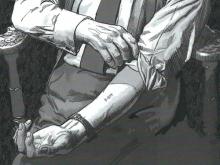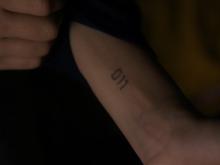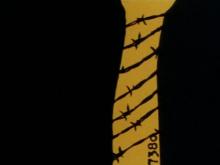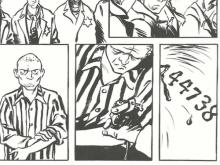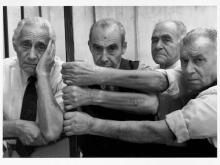Crusade in Europe
CRUSADE IN EUROPE, Ep. 22, George R. Black, USA 1949
CRUSADE IN EUROPE (1949) is a 26-episode series about US troops in Europe during World War 2 based on the book with the same title by general Dwight D. Eisenhower who became president of the United States in 1953. Episode 22 starts with events at the end of March 1945, when American troops crossed the river Rhine. Around five minutes into the episode, there is a scene featuring young Wehrmacht and Waffen SS soldiers being captured during the conquering of the Ruhr, one of Germany’s largest industrial areas. In the scene, a bare-chested man rounds up, counts and leads the uniformed soldiers at a compound that is fenced in with barbed wire. As the camera reveals in an ostentatious close-up panning shot, moving down from his emotionless face to his arm, the bare-chested guard has a number tattooed on his left arm. The commentary explains, “Sometimes former inmates of German concentration camps were put in charge of guarding captured Nazi soldiers.” The connection between the Number Tattoo and concentration camp inmate is self-evidently assumed without further explanation. Then the camera cuts to a group of SS officers with skull badges who have lowered their gazes in shame as if they were directly reacting to the number and its reference to German atrocities. The moment of identification by means of the number works slightly different than the showing of the number by the child survivors, though. The number is not presented but rather “discovered” by the camera, a manifestation that became an equally typical way of rendering the moment of identification in popular culture. However, the combination of German POWs in March 1945 and former inmates of concentration camps begs for an explanation. By that time, none of the camps in the West had been freed, and the Number Tattoo was a specialty of Auschwitz. Hence, such an encounter in March of 1945 is historically rather unlikely, and the footage was possibly shot later in 1945. The concentration camp inmate in the POW camp primarily allows an effective juxtaposition of German atrocities and American war effort. Therefore, it could be called an indirect allusion of the footage of the child survivors.
